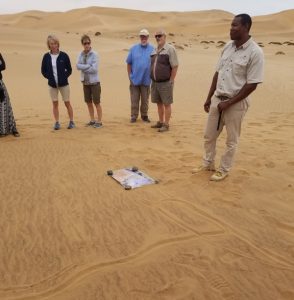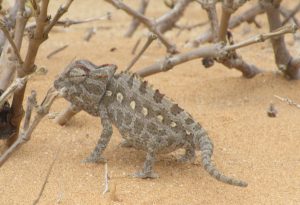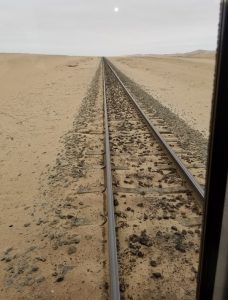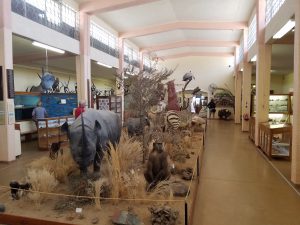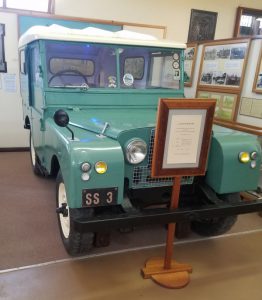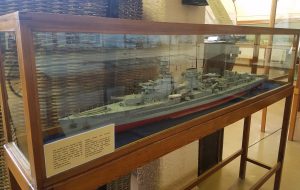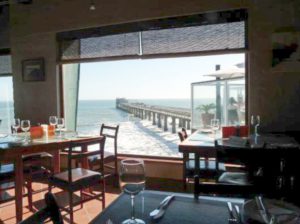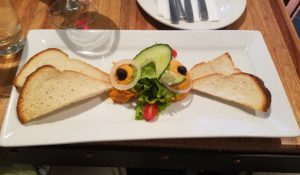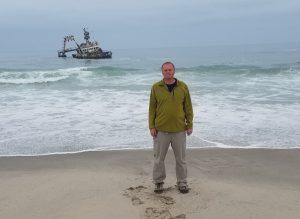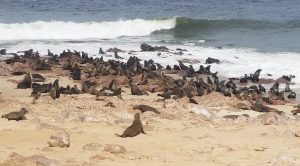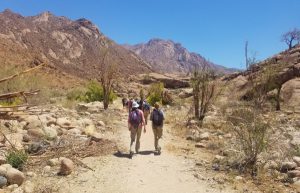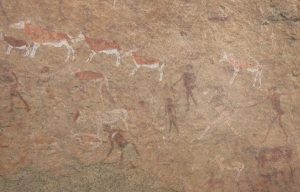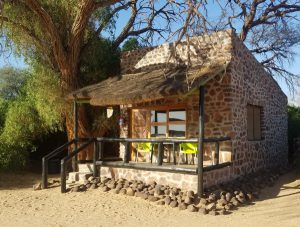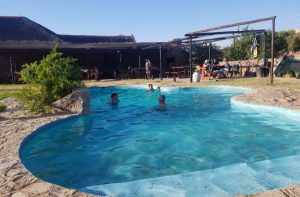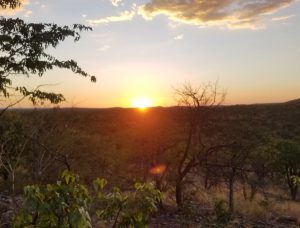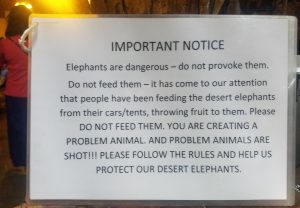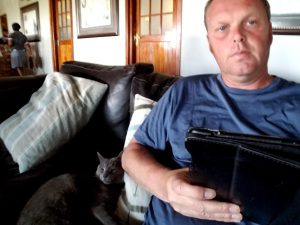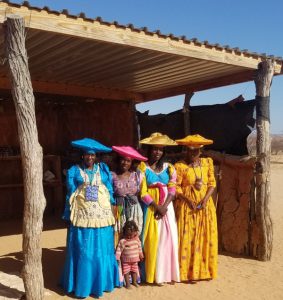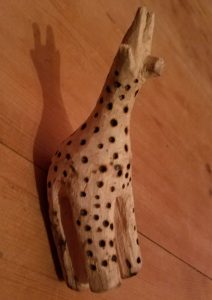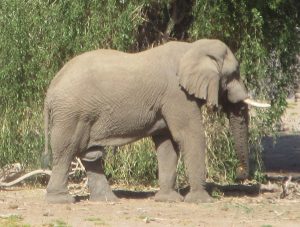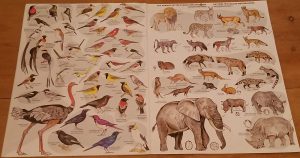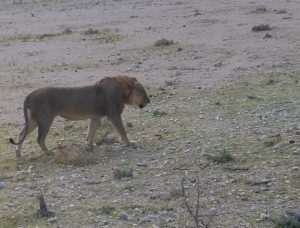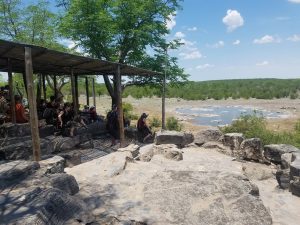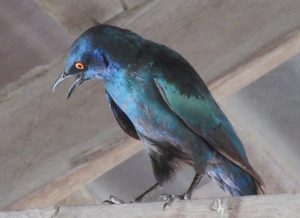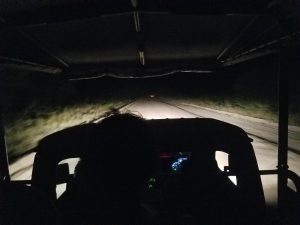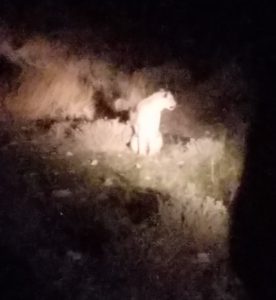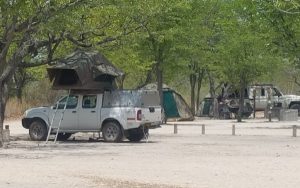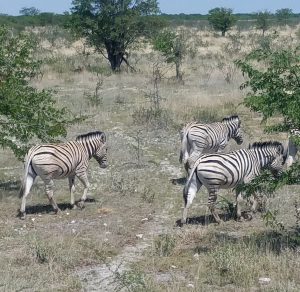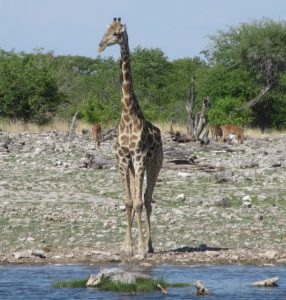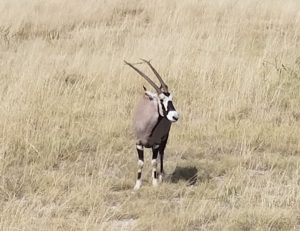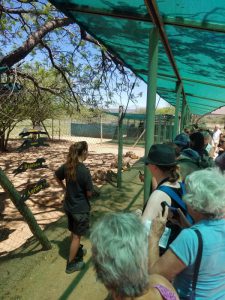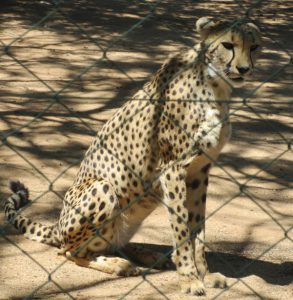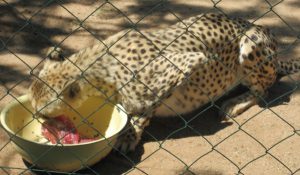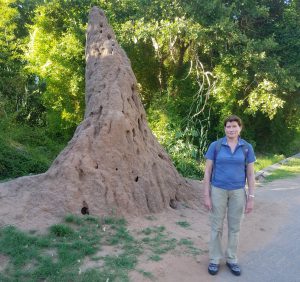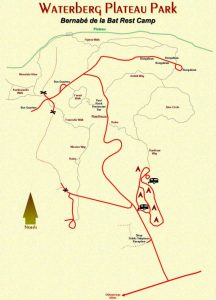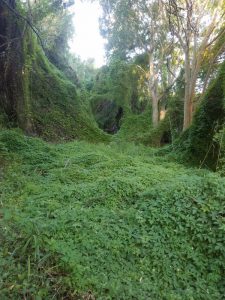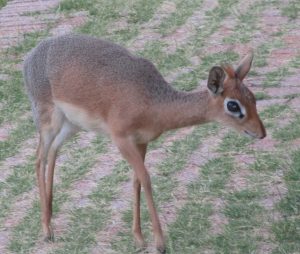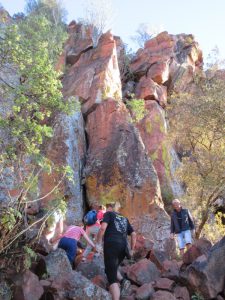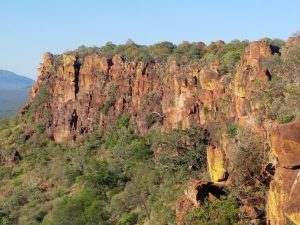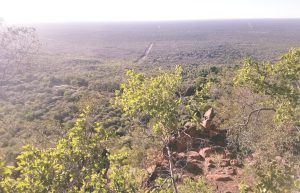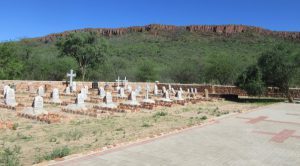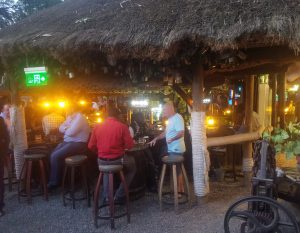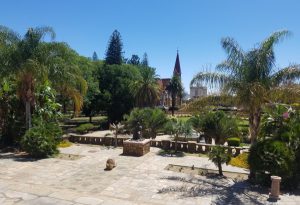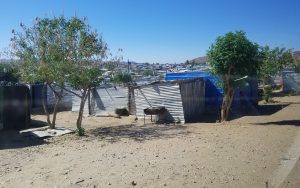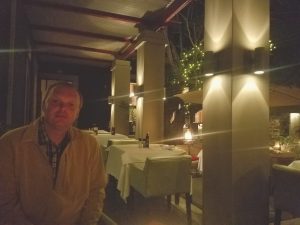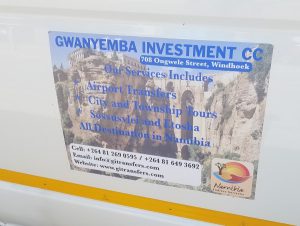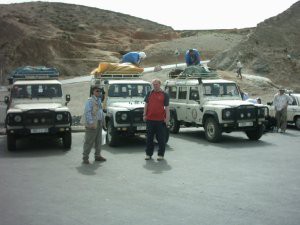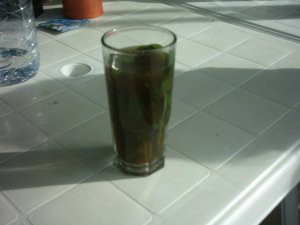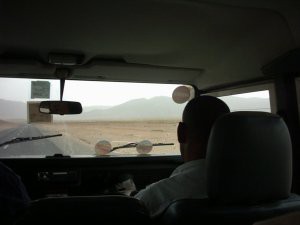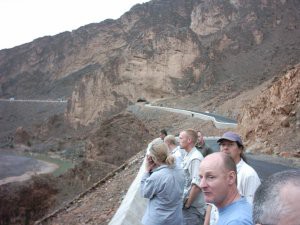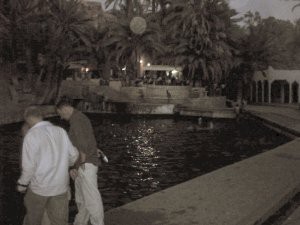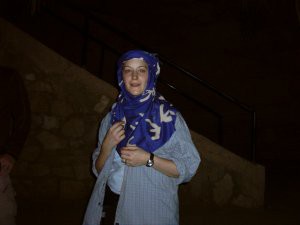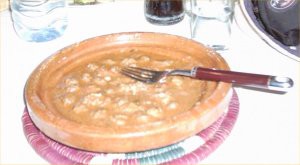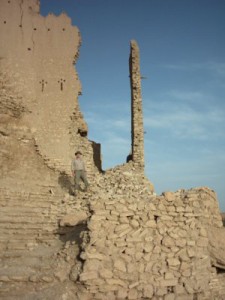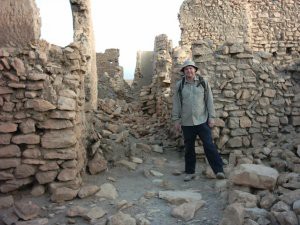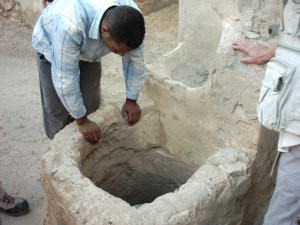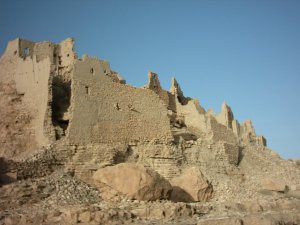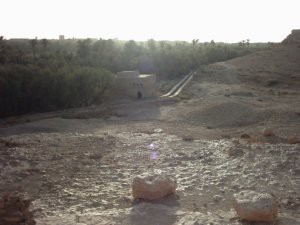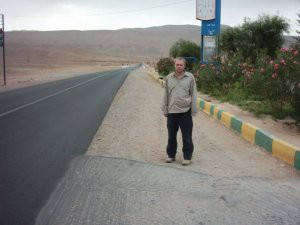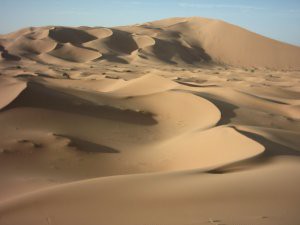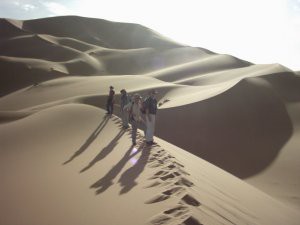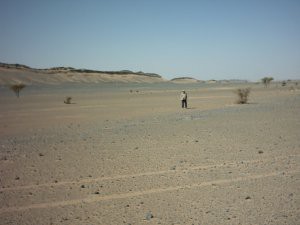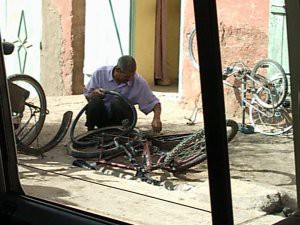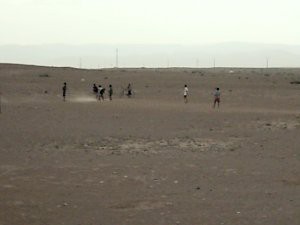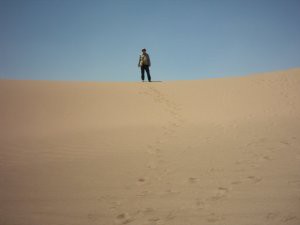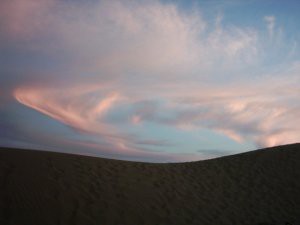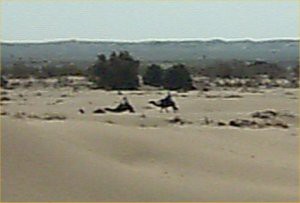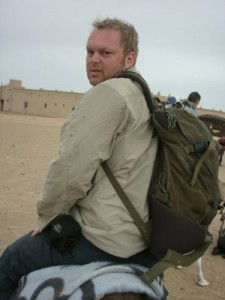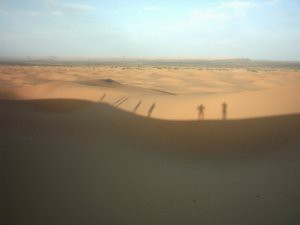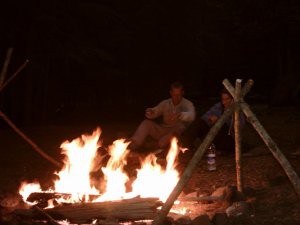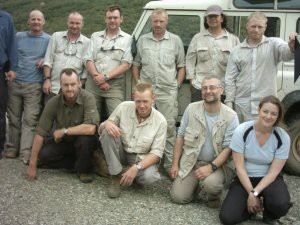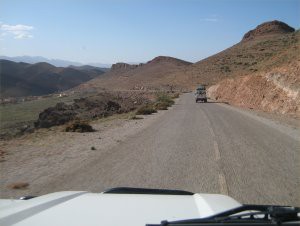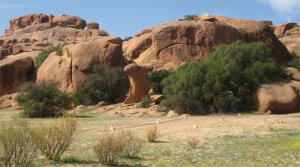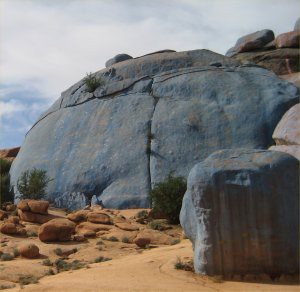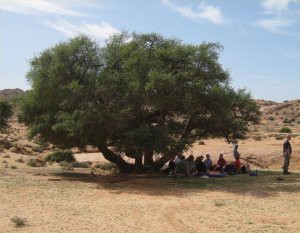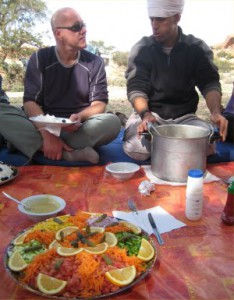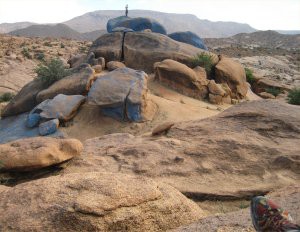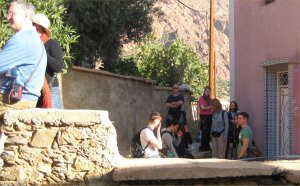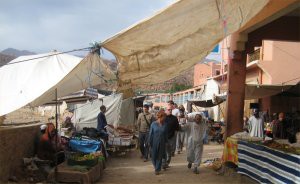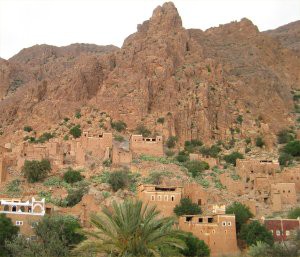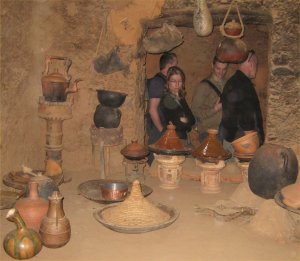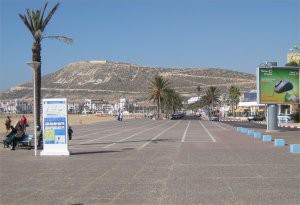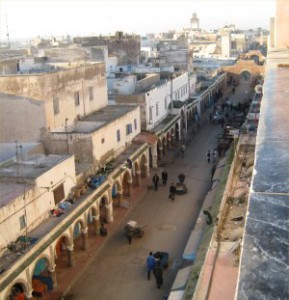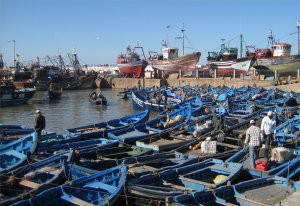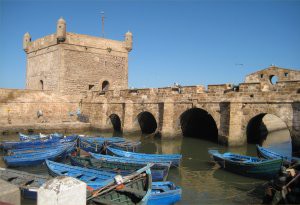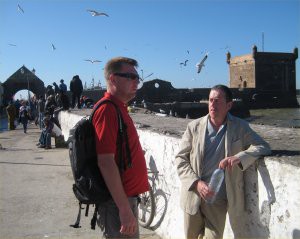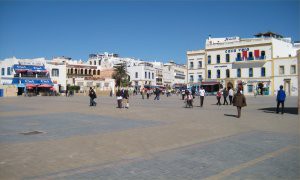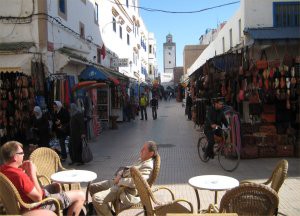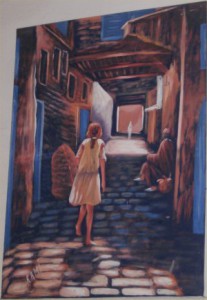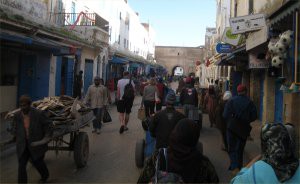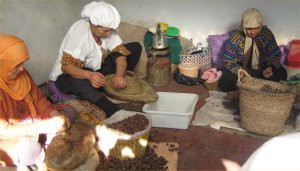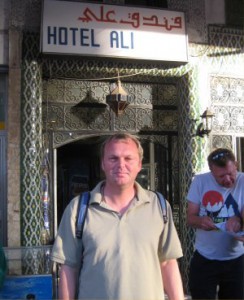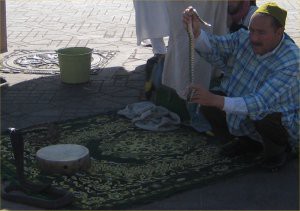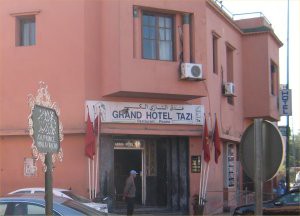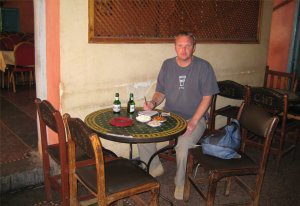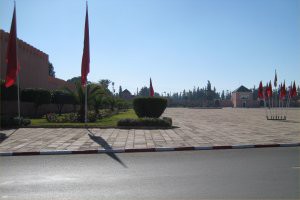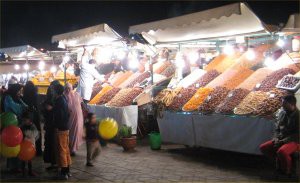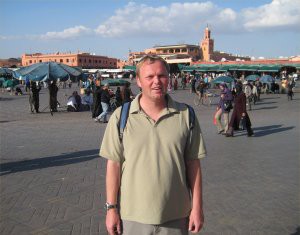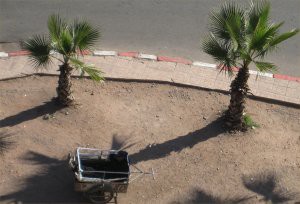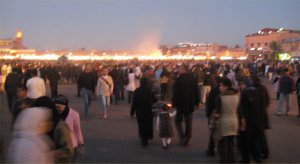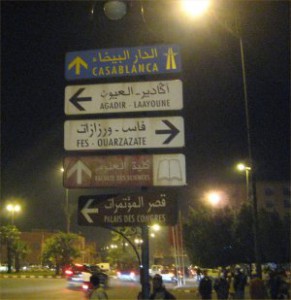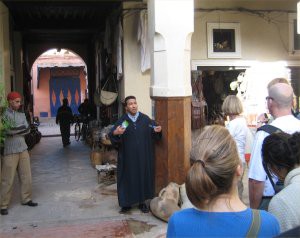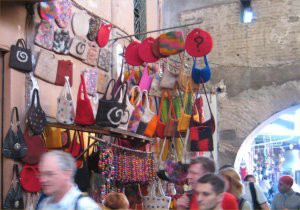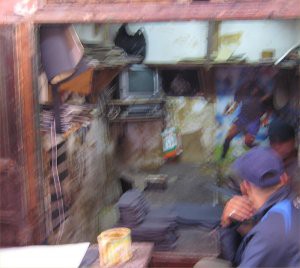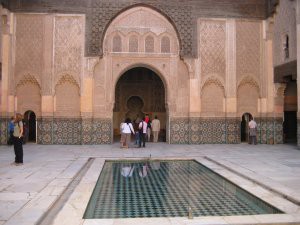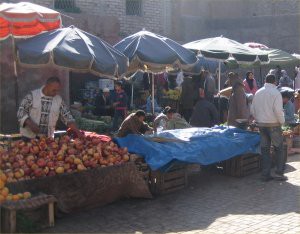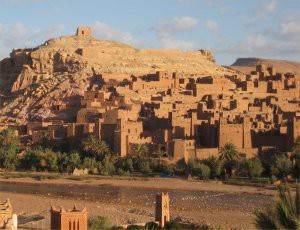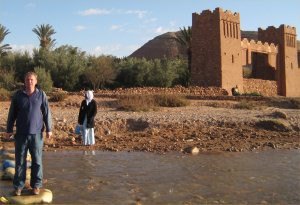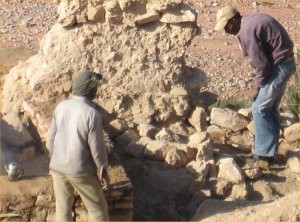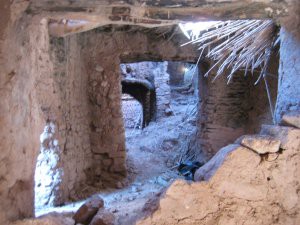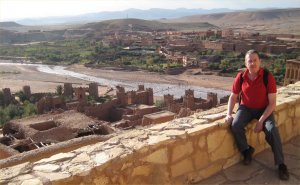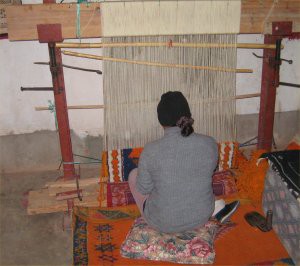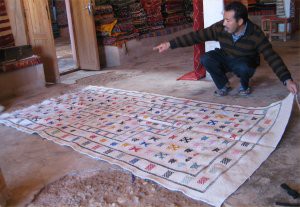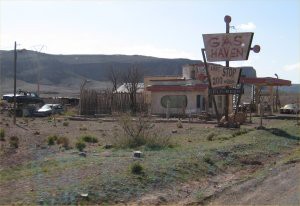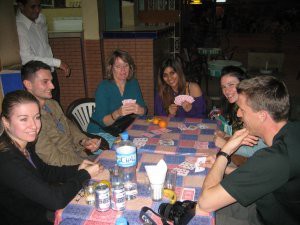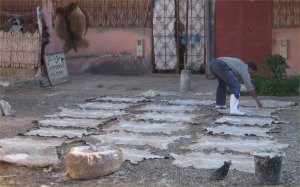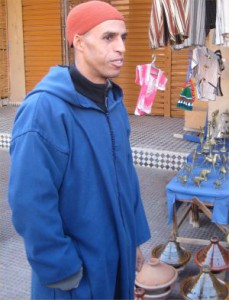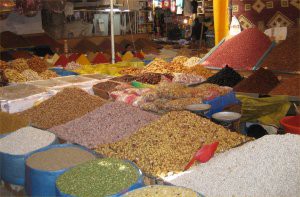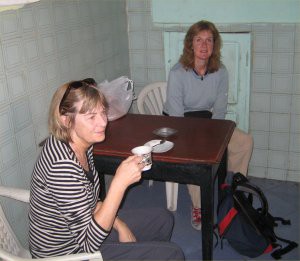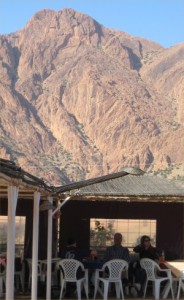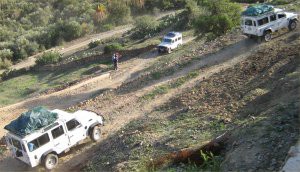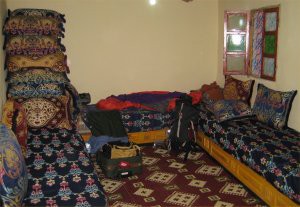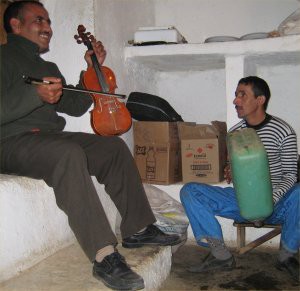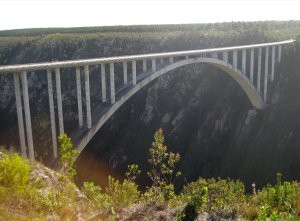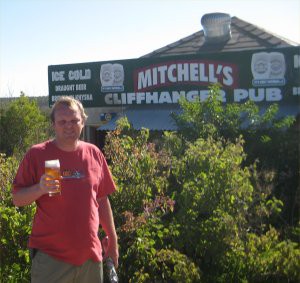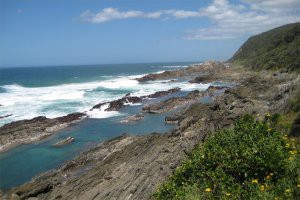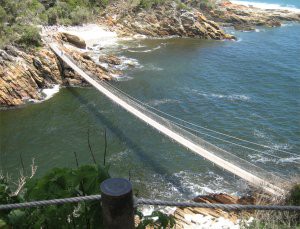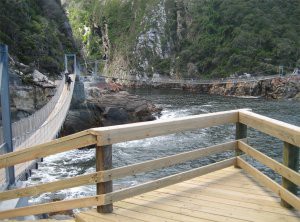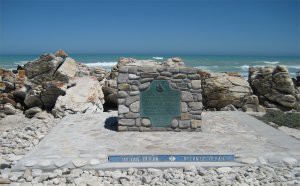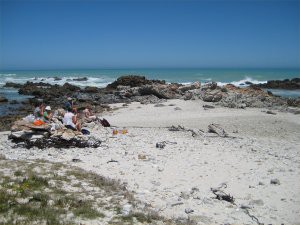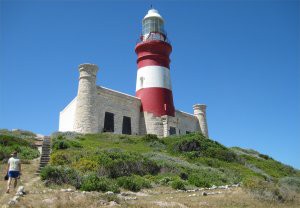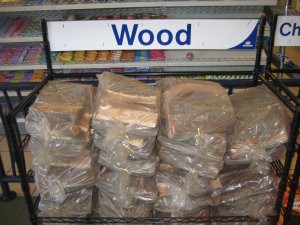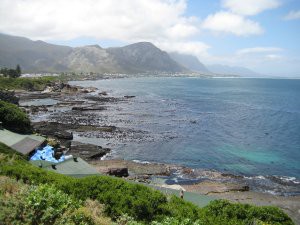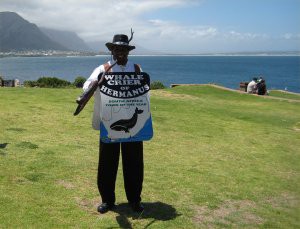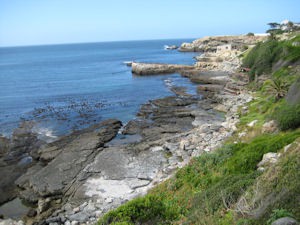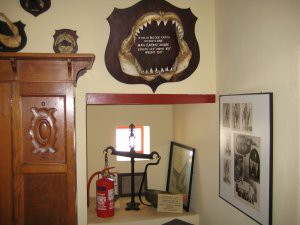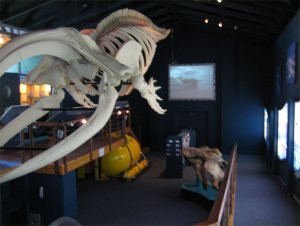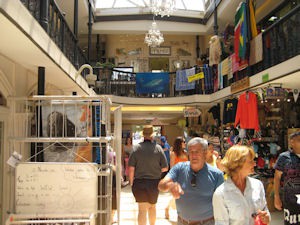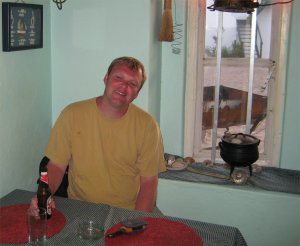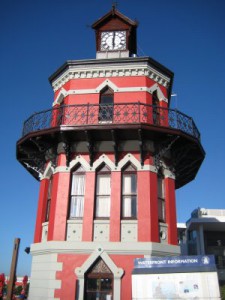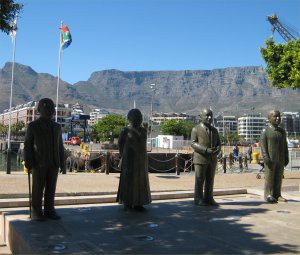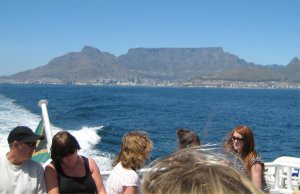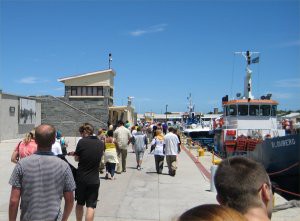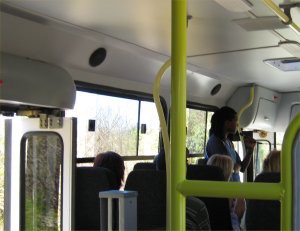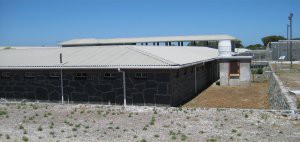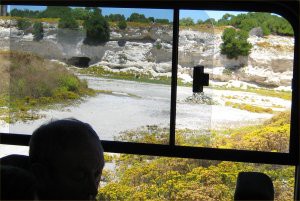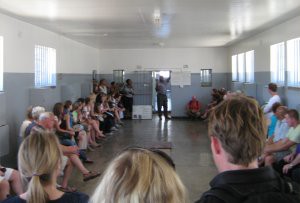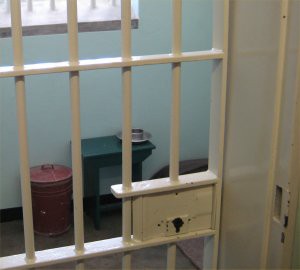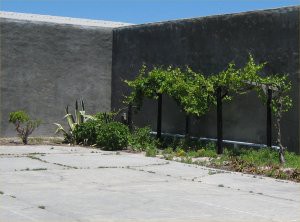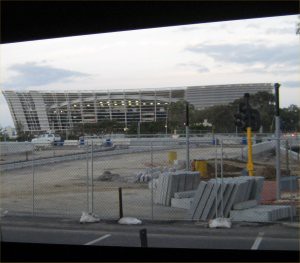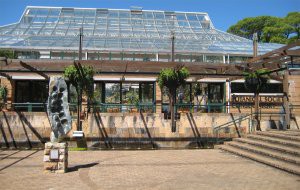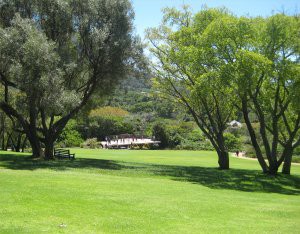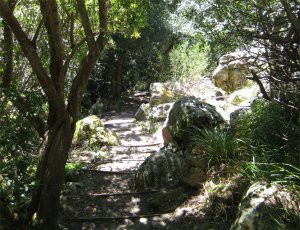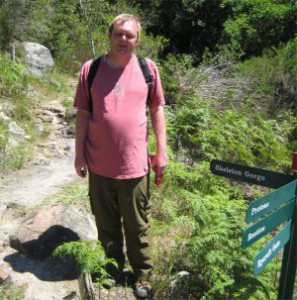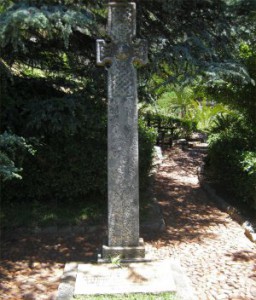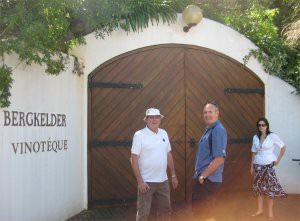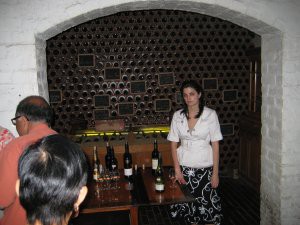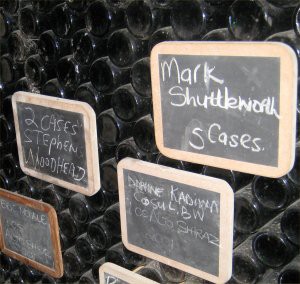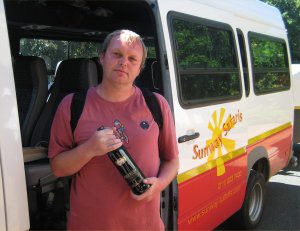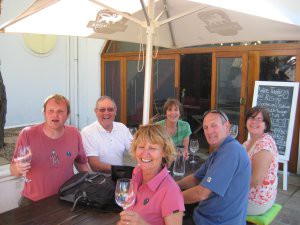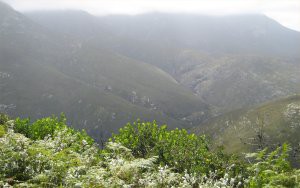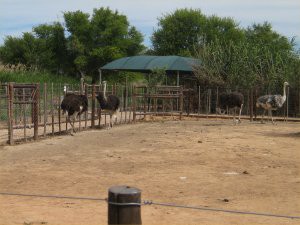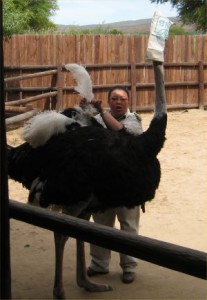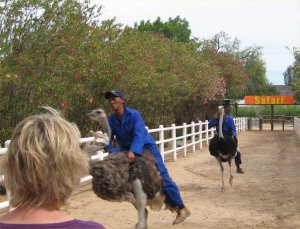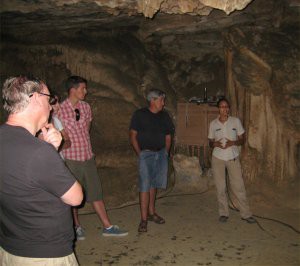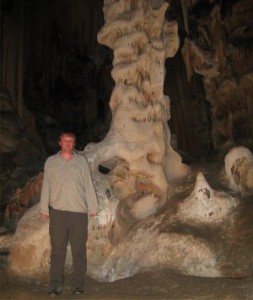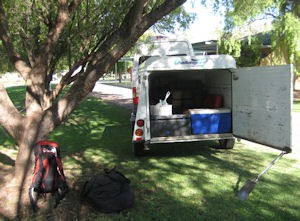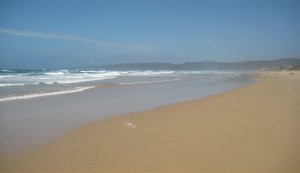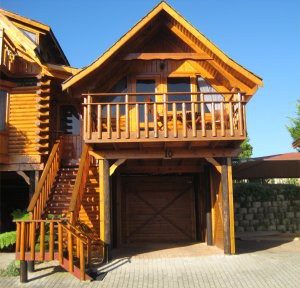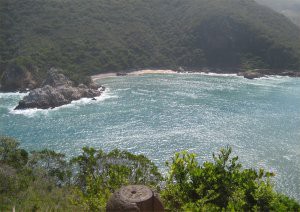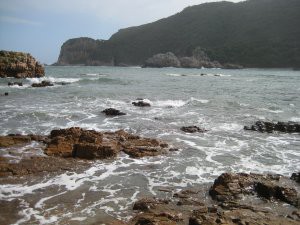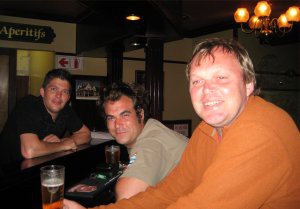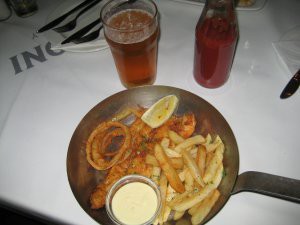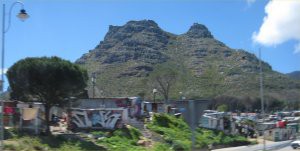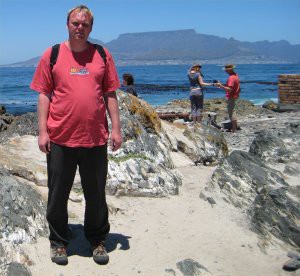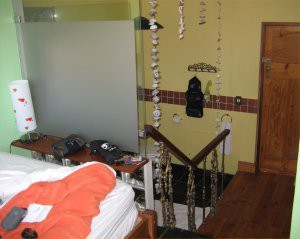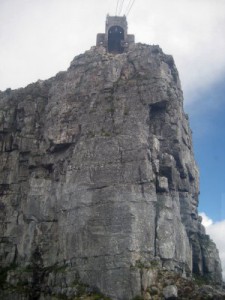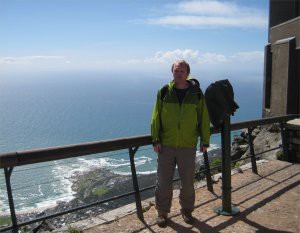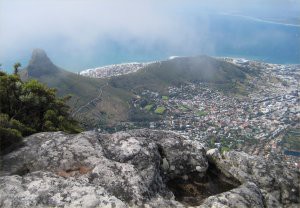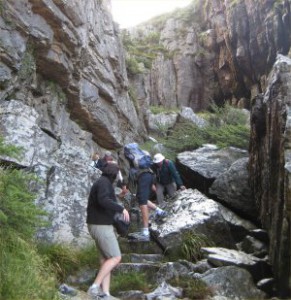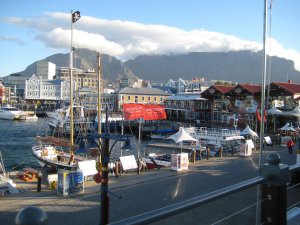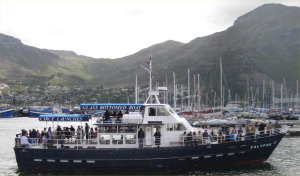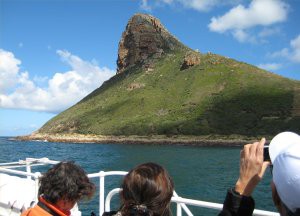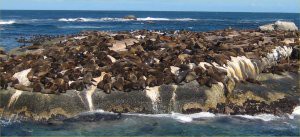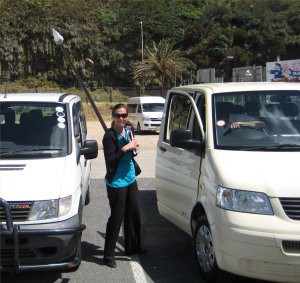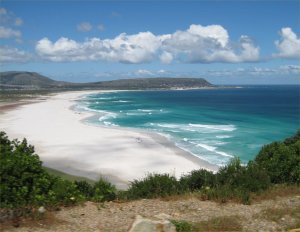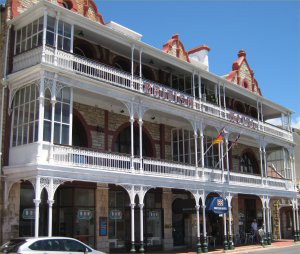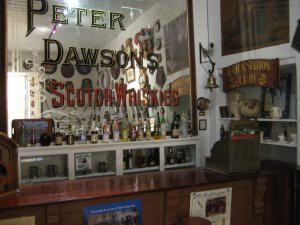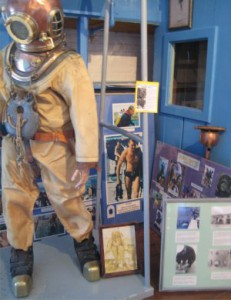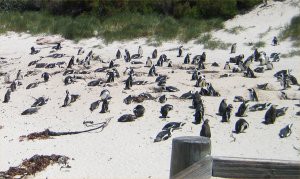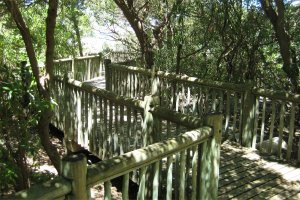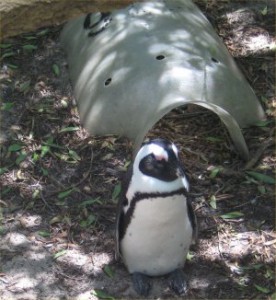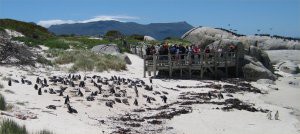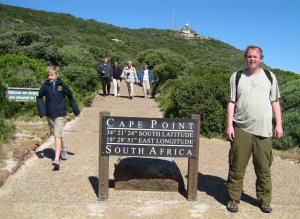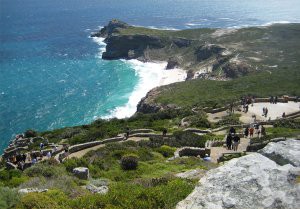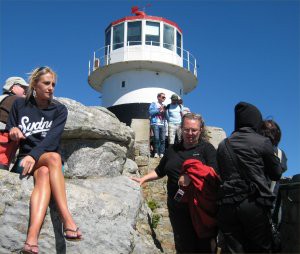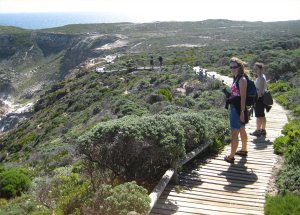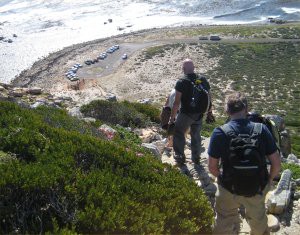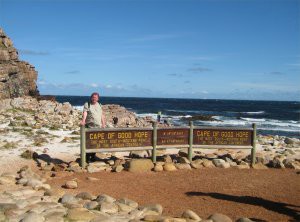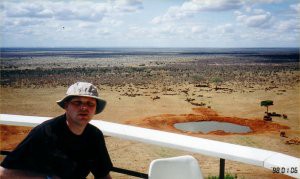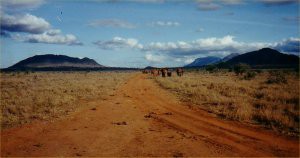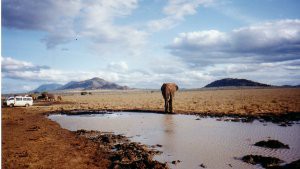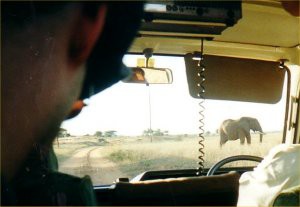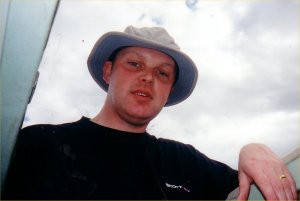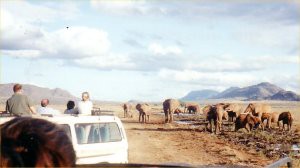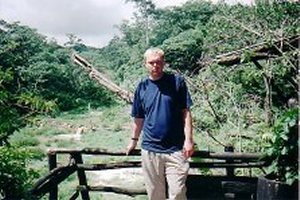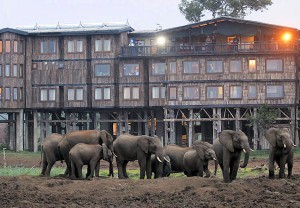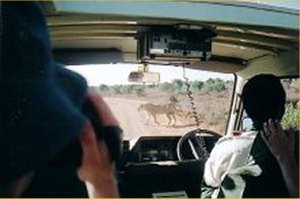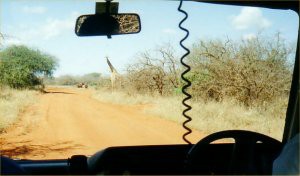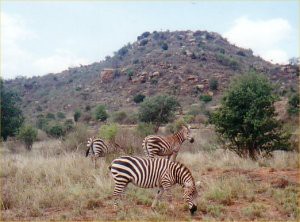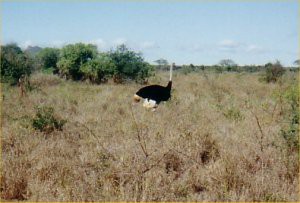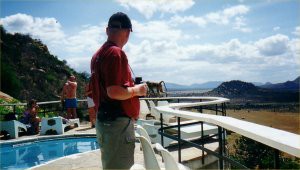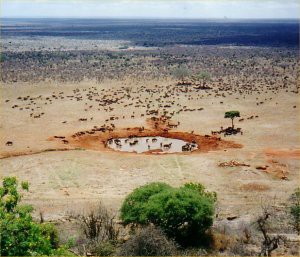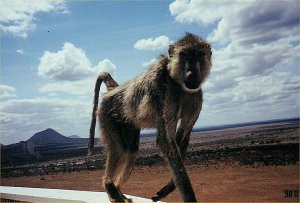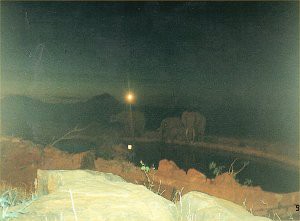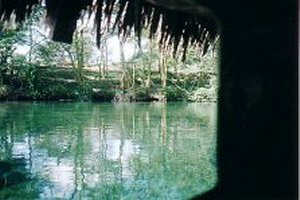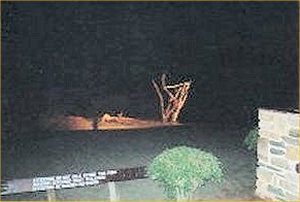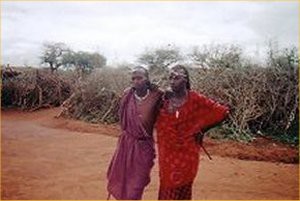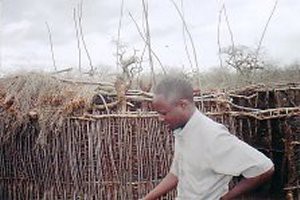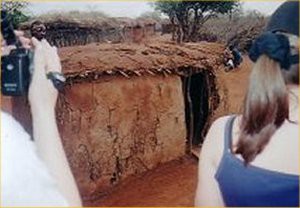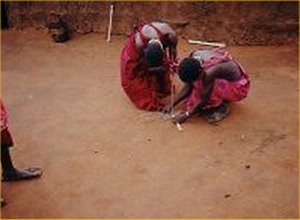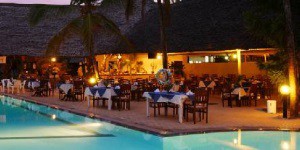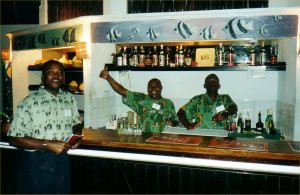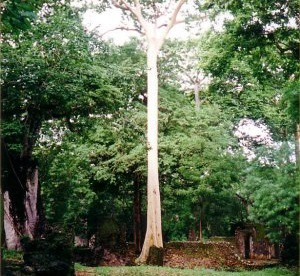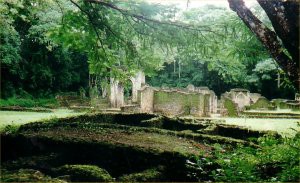Early in my life, I was inspired by the Adventure fiction novels of Wilbur Smith.
One of my favourites, The Burning Shore, takes place in Namibia.
Namibia is quite an expensive place, and would require 3 planes just to get to it, and 3000km driving in a truck to see it all, but I knew it would be worth it.
Above, I’m standing in front of the Waterberg Plateau in the mustard coloured Rohan jumper I’ve been wearing a lot this year.
We arrive at Hosea Kutako International Airport after travelling for nearly 30 hours.
The airport is 45km from our first stop, the capital Windhoek.
We needed to change money and buy sims for our phones. I would have preferred to do it later, but these sorts of things are best sorted out at the airport and I was pleasantly surprised by the professionalism of everyone who worked there.
A taxi ride, and we arrive at the Safari Hotel, a really large hotel complex that was used as the start and end point for expeditions run by several companies like Explore (who we went with).
It was a bit out of town, so we decided to have a dip in the pool and relax at the bar for a few pints (you can guess which one of us did which).
I tried to stay awake as long as I could to combat jet lag, then off to bed around 11pm Namibia time and a deep sleep.
We’d arrived early and our tour was due to start at 6pm that evening, so we decided to head into town and do some exploring.
The Alte Festa (or Old Fort) is the oldest surviving building in Windhoek and built by the Germans during colonial times.
Inside is a statue called The Rider. Quite controversially, it is a symbol of German victory during the Herero/Namaqua war in 1904.
The newer Independence museum, has a statue of Sam Nujoma, Namibia’s first president, holding a copy of the constitution.
I thought the building looked a bit like a coffee machine. It was built by North Korea and stands on Robert Mugabe avenue.
Inside, lots of propaganda stuff.
Reasonably interesting, but mostly pictures of people and some shocking paintings of massacres.
Only thing was, if you didn’t actually know what event it referred to, there was no text there to tell you.
A major visual display, didn’t work and I found the section about life before colonialism, where everyone lived in peace and harmony a little bit unlikely.
But otherwise, an interesting museum which focused more on politics than facts.
Far more interesting to me, was the Owela museum, which had details about different tribes and how they lived.
Of special interest was a section on the San people. Up until something like 1940, people were not only allowed, but actively encouraged to “shoot Bushmen and wild dogs on sight”.
They can live comfortably in a desert where most people would be dead in 10 hours and have lived the same way for the last 20,000 years.
I find shelter building fascinating, and in the past I’ve had a go at building a Wikiup.
This one in the museum was built by 2 local woman who were featured in the exhibit.
We continue wandering around, and find the Gibeon meteorites.
In any other country, they would probably be in a museum. In Namibia, they’re next to a shopping mall on Post Street.
We decide to get a taxi back. Our driver (a young man) invites us back to his car. It has no seat belts, I sit in the front, Nikki sits in the back with his 2 “girlfriends”.
As the car careers off at speed there is some sort of African rap screaming out of a cd player and an open pocket knife on the dashboard (no keys are used to start the car …)
But, despite a terrifying journey, he gets us back to our hotel and says a smiling thank you as we pay him. You don’t get things like that happening when you travel with Thomas Cook.
Later, once the official tour begins, our guide points to the area where we got the tax and said “don’t go walking around there”.
Our tour meeting begins at 6pm sharp and were introduced to our Explore guide. Wendy was South African, very tall and incredibly well organised.
Our driver Shepherd from Zimbabwe, was quietly spoken but having driven across deserts and mountains for 20 years new his job inside and out.
A detailed itinerary is supplied. We’ll travel over 3000km by the end of the trip.
We have dinner, get a few drinks and retire to bed.
In the morning we see the bus that will take us across Namibia. The seating was raised so we could see things more easily and underneath in the hold, were tables, chairs, shovels and just about everything you’d need for an adventure.
At the front of the upstairs cabin, it even had a freezer and places to charge phones and laptops.
And with that, we load our bags, stock up on water and head for the Zebra River Lodge.
We travelled 284km on our first day. Driving on tarmac roads for part of it was fine, but once we got onto the open tracks, it was really hard going.
We had lunch on the trail most days.
Typically, Wendy would cook an amazing lunch, served on a big table near a tree to provide shade.
The food was excellent (vegan and lactose intolerance aren’t widely acknowledged in Africa, so she did really well to cook for everyone without incident).
It was nice to sit on a comfortable chair in the bush and have a can of lager afterwards.
We arrived at the Zebra River Lodge around 3:30pm and are shown to our rooms.
Our accommodation on the trip notes had been described as basic, but I found them all to be the lap of luxury like the one above.
In the afternoon, I sit on the terrace and watch this Weaver bird construct its nest. I’m not normally into Ornithology, but some of the birds I saw in Namibia really were fascinating.
I’d see something even more fascinating the following day.
There were a number of interesting trails and hills nearby.
We went walking for a couple of hours.
But this is Africa after all.
Twenty minutes after we get back, the gorgeous sunny day is transformed as torrential rain and then hail batter the hotel terrace.
We had dinner on the terrace later that evening. Wendy had realised it was Nikki’s birthday from her passport and laid on a really nice cake. All the kitchen staff came out and sang happy birthday 🙂
Today we’d be doing a 360km round trip to a place called Sesriem and the start of our real adventure.
We stop at the Sesriem gate and get some coffee. With time to wander around, I find this.
Believe it or not, this is also a Weaver nest.
A bit of a sort of apartment block idea, it has multiple nests inside. It’s possible for a chick to grow up, find a mate, find a chamber inside the nest and have her own chicks without ever leaving the nest.
We have to use local jeaps once we get to the main area. Not well organised at all, and we are standing in baking heat.
After much faf, and superb organisation by Wendy, were off careering through the soft desert sand.
Were going to see one of the worlds most incredible sights – The Deadvlei in the Namib desert, the oldest desert on earth.
As we disembark, some people decide to go off climbing sand dunes. I enjoy a flat walk-in and get my camera ready.
Deadvlei is a salt pan surrounded by the tallest sand dunes in the world.
Inside it’s really quiet and serene, and the dead trees growing everywhere make it quite spooky.
After 40 minutes, we head back. A pretty amazing experience.
As we drive back along the desert highway, we visit “Dune 45” although that sounds like the name of a local nightclub in Newton Heath, it actually relates to a very popular sand dune which is 45km from the Sesriem gate.
It’s very popular with Japanese tourists as its right next to the road and easy to get too.
I took this picture of the dune, with a tree at the foot and an Oryx relaxing in the shade. I think it’s probably the best photo I’ve ever taken and I’ve even had it framed and put up at home.
We wander around in the Sesriem canyon.
Sesriem means six thongs. Six thongs of rawhide rope would be tied together and a bucket fastened to the end.
It would then be lowered down into the canyon to collect water.
Back to the Zebra River Lodge.
It had been a really long day, so something to eat, bottle of wine and off to bed.
Up early today and were heading for Swakopmund where we’ll be staying for 2 nights.
I just put this picture up to show you the view we saw for most of the day.
Honestly, in a whole hour you’d see nothing but desert.
We stop off at the famous “town” of Solitaire.
A bloke and his wife bought some land, built a cottage and then a few other things. The wife’s brother joined them, but then the wife left.
The two of them ran the “town” together. It’s on a main highway, so the bakery is very popular (I had a Viennese whirl, I really didn’t think I’d get to eat one while I was in Africa!)
They also have old farming equipment and cars (like the one above) which are painted in nice colours.
Best thing I liked about it was they actually have an air strip, and wealthy people can fly in and get cakes.
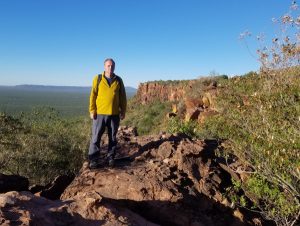
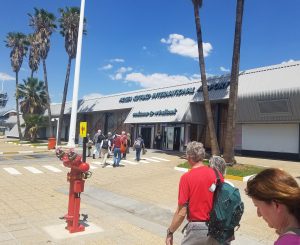
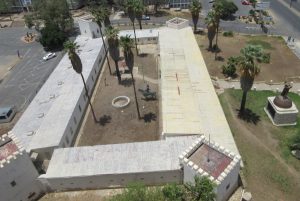
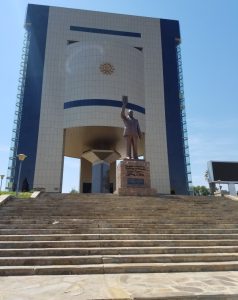
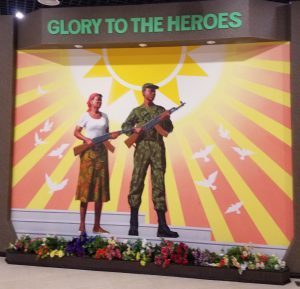
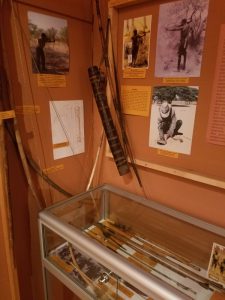
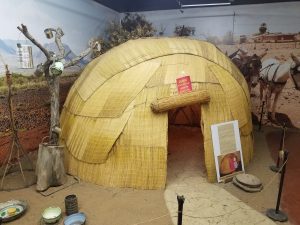
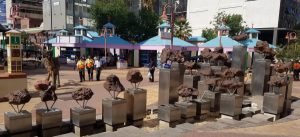
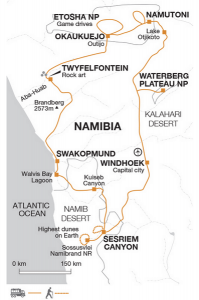
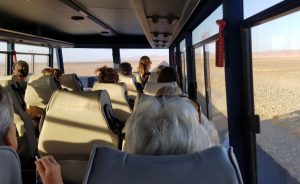
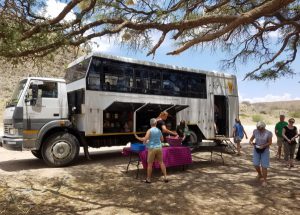
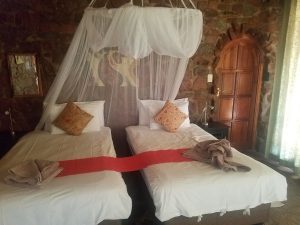
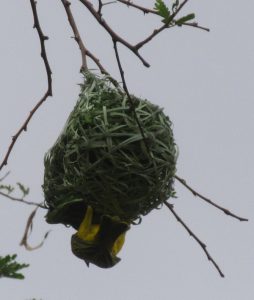
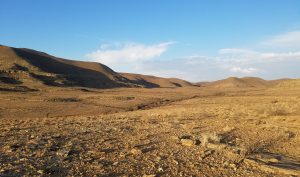
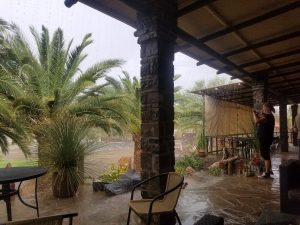
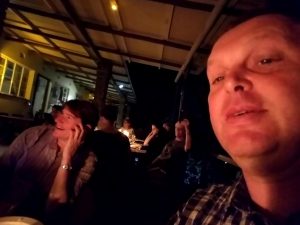
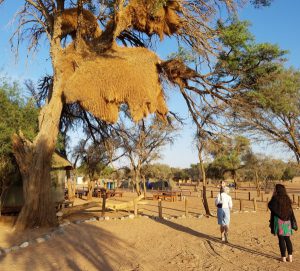
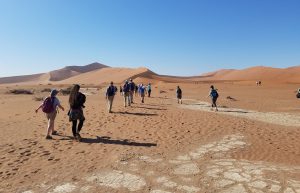
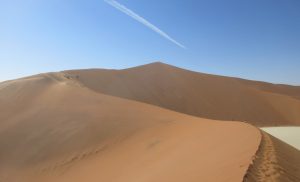
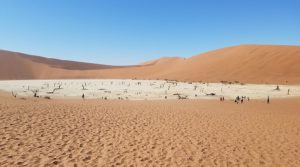
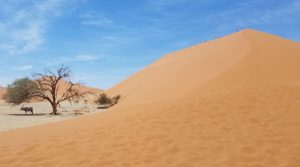
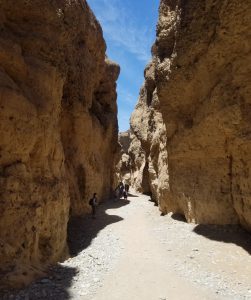
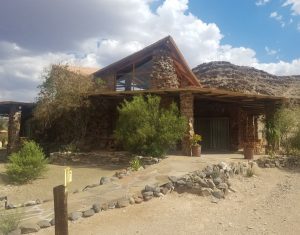
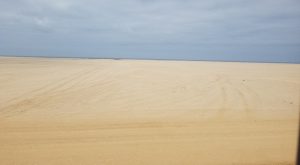
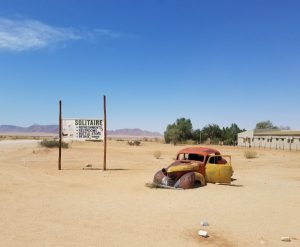
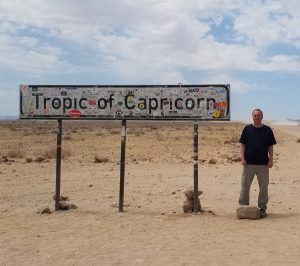
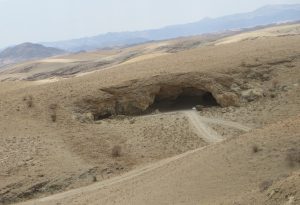
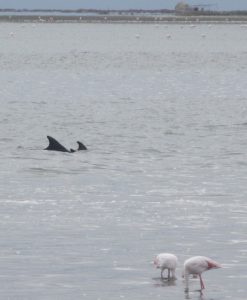
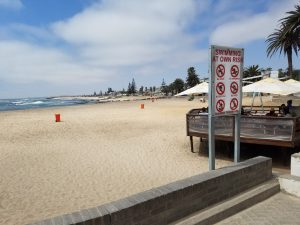 ,
, 